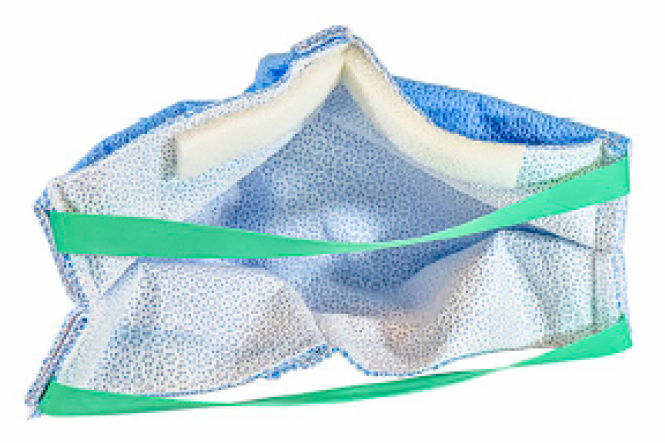Given the current shortage of respirator masks and the resulting lack of personal protective equipment for use by clinical staff, we examined bottom-up solutions that would allow hospitals to fabricate respirator masks that: (i) meet requirements in terms of filtering capacities, (ii) are easy to produce rapidly and locally, and (iii) can be constructed using materials commonly available in hospitals worldwide. We found that Halyard H300 material used for wrapping of surgical instruments and routinely available in hospitals, met these criteria. Specifically, three layers of material achieved a filter efficiency of 94%, 99%, and 100% for 0.3 μm, 0.5 μm, and 3.0 μm particles, respectively; importantly, these values are close to the efficiency provided by FFP2 and N95 masks. After re-sterilization up to 5 times, the filter’s efficiency remains sufficiently high for use as an FFP1 respirator mask. Finally, using only one layer of the material satisfies the criteria for use as a ‘surgical mask’. This material can therefore be used to help protect hospital staff and other healthcare professionals who require access to high quality masks but lack commercially available solutions.
Oude Vrielink TJC, Meijer JH (2020) Using surgical wrapping material for the fabrication of respirator masks. PLoS ONE 15(7): e0236239.
